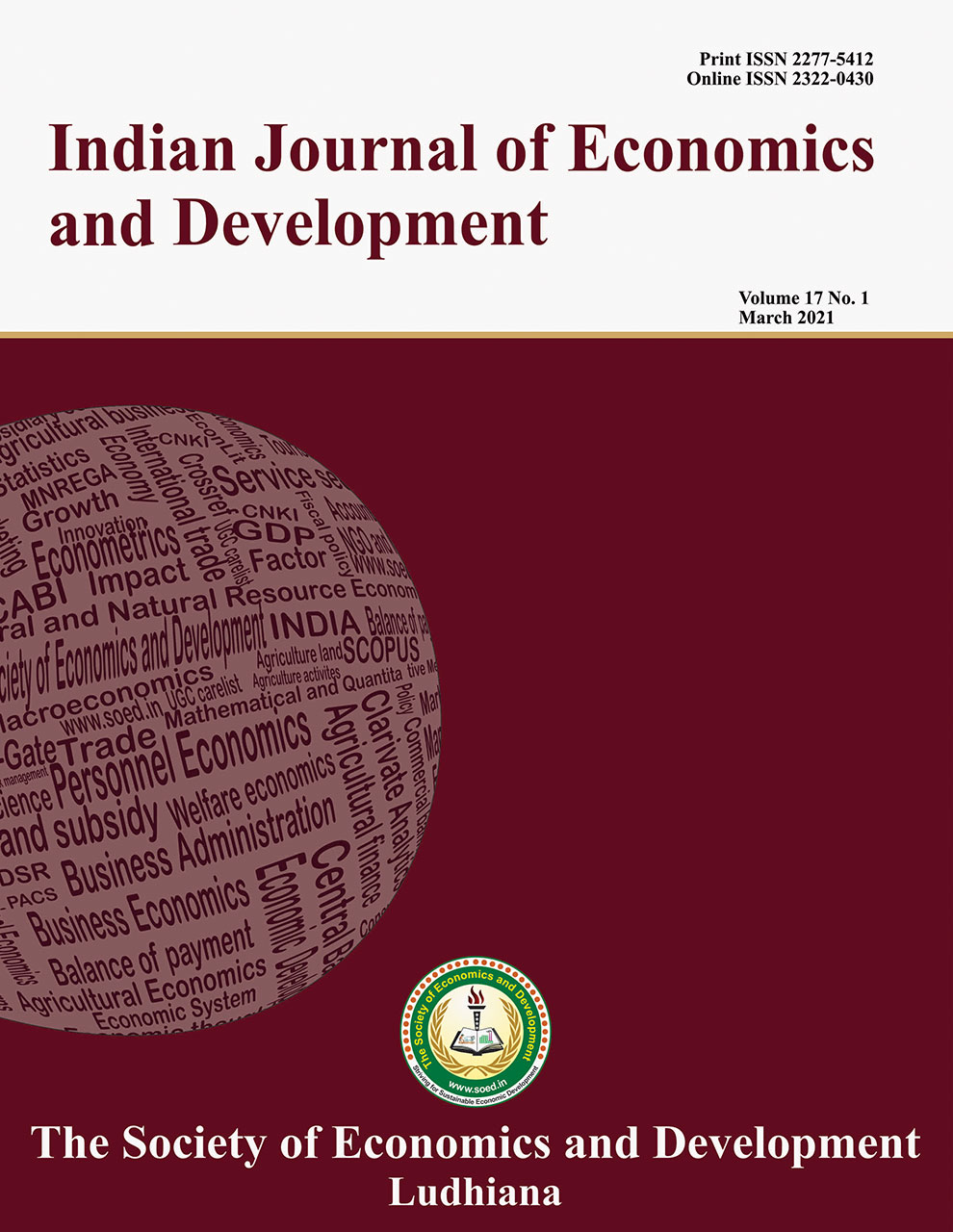Economic Viability of Sugarcane Cultivation for Small Farmers in Uttar Pradesh: 24439

Price: ₹ 1000
https://doi.org/10.35716/IJED-24439
Author: Rajni Jain, Nisha, and D.C. Meena
Author Address: ICAR-National Institute of Agricultural Economics and Policy Research (NIAP), New Delhi-110012 (Delhi)
Abstract
The present study is based on primary data collected from
188 farmers who cultivate wheat, paddy, and sugarcane in Dhamravali village,
Bulandshahr district, Uttar Pradesh, through a structured questionnaire. The
results showed that sugarcane had the highest Benefit-Cost Ratio (BCR) of 1.76,
offering the best return per unit of cost. The paddy-wheat system had a BCR of
1.59. The scale efficiency of sugarcane, determined using Data Envelopment
Analysis (DEA), was 0.969, indicating that output could be increased by 4 per cent
by optimizing landholding size. Socio-economic factors such as caste,
landholding size, principal occupation, number of farm implements, and soil
fertility were found to influence sugarcane cultivation. The study concludes
that raising technological awareness, improving input quality, adopting
water-efficient irrigation methods, and enhancing infrastructure can boost
sugarcane returns. Additionally, introducing advanced techniques such as bud
chip planting can further improve yields and enhance the financial
sustainability of farmers.
Keywords
Benefit-cost ratio, cost of cultivation, data envelopment
analysis, efficiency, technology awareness.
JEL Codes
D61, Q00, Q10, Q12, Q19.
Description
Indian Journal of Economics and Development
Volume 21 No. 2, June 2025, 000-000
https://doi.org/10.35716/IJED-24439
Impact Factor: 0.3 (Web of Science)
NAAS Score: 6.30 (2025)
Indexed in Scopus (SJR = 0.13)
Resurchify Impact Score: 0.23
UGC Approved (UGC Care List Group II)
Index Copernicus (ICV 2023: 105.09)



